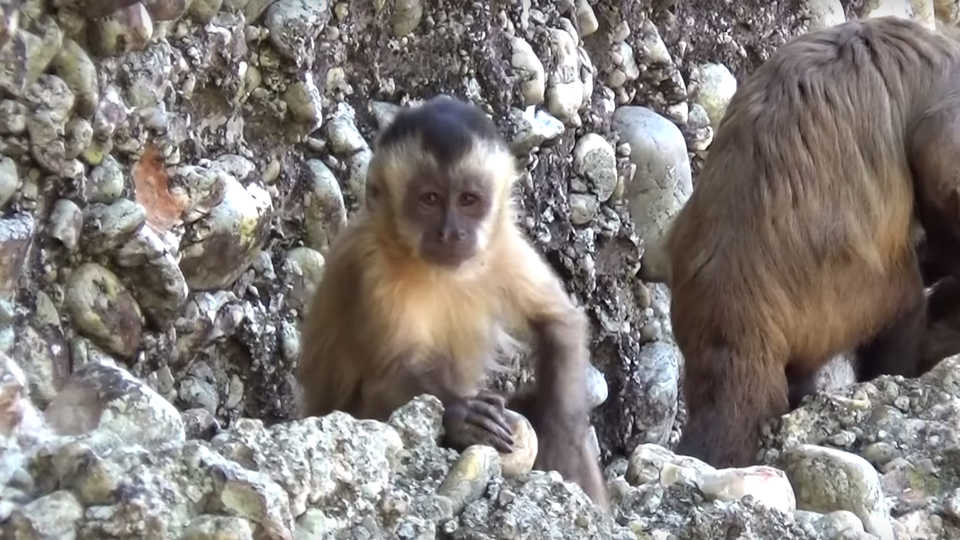Science News
Monkeying Around

Human tools or monkey flakes?
We humans are regularly reminded that we’re not special. Many animals display intelligence or reasoning, and some use and even make their own tools. Bearded capuchin monkeys (Sapajus libidinosus) are one of these talented and smart creatures. They often use stones intentionally to dig, to get into fruits and nuts, and to impress their mates. Now, it’s their unintentional use that rocks humans from our perceived pedestals.
Scientists observed capuchins in Serra da Capivara National Park in eastern Brazil repeatedly pounding stones together. (The observations are available in video here and here.) The purpose is unclear—the monkeys seem to lick or sniff the stones after they pound them together, “suggesting that they may be ingesting either powdered quartz or lichens,” the team writes in their study today in Nature. But the researchers did find an interesting byproduct of this action. The stone pounding deliberately crushes the surface of both stones, unintentionally producing flakes with the characteristics and shape of deliberately produced sharp-edged, thousands-of-years-old hominin tools. And although the monkeys were seen to reuse broken hammer-stone parts as fresh hammers, they were not observed using the sharp edges of fractured tools to cut or scrape other objects.
The authors conclude that sharp flake production, or stone knapping, can no longer be solely associated with the intentional production of cutting flakes by our ancestors. Sorry, anthropologists!
Chimpanzees pass down family tools
Another team, halfway around the world in the Nouabalé-Ndoki National Park in the Republic of Congo, used video to capture examples of wild chimpanzee (Pan troglodytes troglodytes) mothers transferring specialized termite-gathering tools to their offspring.
“Wild chimpanzees are exceptional tool users, but in contrast to humans, there has been little evidence to date that adult chimpanzees teach youngsters tool skills,” says Stephanie Musgrave, team-lead and the first author on the study, published in Scientific Reports.
In humans, teaching involves an understanding of others’ abilities and the intention to help them learn. In this study, chimpanzee mothers both anticipated the youngsters’ need for a tool and devised strategies to reduce the effort necessary to provide them.
In examples from the videos, chimpanzee mothers sometimes bring multiple tools to a termite nest; they may also divide their fishing probe in half lengthwise, giving one half to their offspring and keeping the other half. This strategy provides their offspring with a usable tool without compromising their own ability to gather food, Musgrave says.
“We found that mother chimpanzees... teach by transferring termite-fishing probes to their offspring,” Musgrave says. “In this population, chimpanzees select specific herb species to make their fishing probes, and they produce probes that have a particular brush-tipped design. By sharing tools, mothers may teach their offspring the appropriate material and form for manufacturing fishing probes.” Thanks, Mom!
Image: M. Haslam and the Primate Archaeology Group (University of Oxford)

